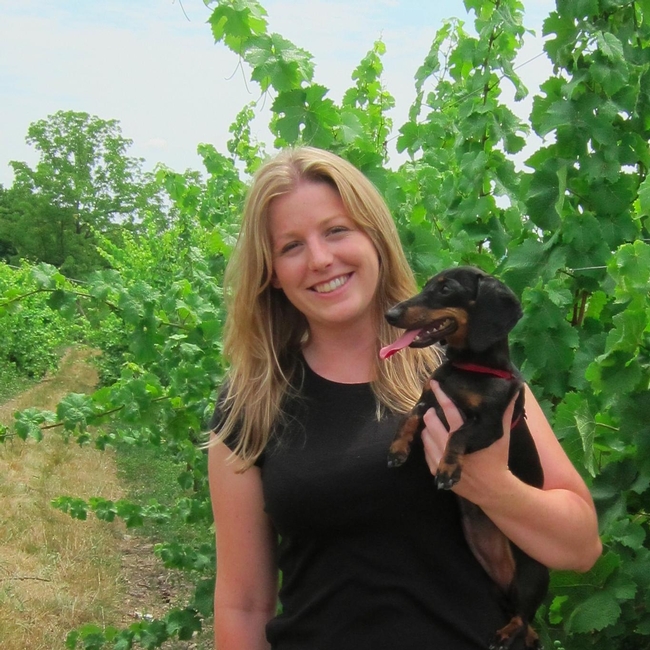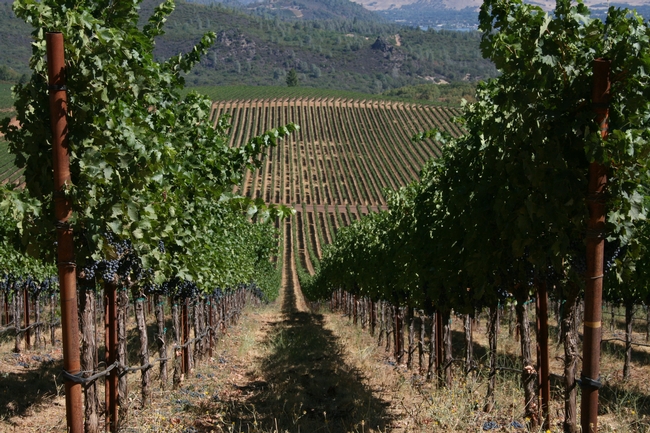
Posts Tagged: Wine
California winemakers' concern over new Chinese tariffs is all about the future
China imports quite a bit of wine, however, very little comes from the United States. At the same time, per capita consumption of wine in China remains very low. So why are California winemakers anxious about tariffs newly imposed by China on U.S. wine? Because China's wine consumption habits are expected to change, reported UC ANR experts in an article posted on The Conversation and NPR websites.
"China is the world's fastest-growing wine market and is expected to soon become the second largest (wine market), after the U.S.," wrote UC Davis wine economist Julian M. Alsten, director of UC ANR's Agricultural Issues Center Daniel Sumner, and post-doctoral scholar Olena Sambucci.
Economists who have studied these markets project further significant growth in China's demand for wine, including premium wine imports, the article said.
"This would make getting pushed out of China especially troubling at a time when global per capita wine consumption has been declining, especially in Europe," the authors wrote.
Autumn wildfire set up research on 'smoke taint' in wine
With the value of wine riding on a delicate balance of aroma and flavor, the impact of winegrapes' exposure to smoke from a wildfire could have significant economic consequences. Last fall's Northern California wildfires sent smoke wafting over an experimental vineyard in Napa Valley, giving scientists the opportunity to study the interplay of smoke and wine quality, reported Jeff Quackenbush in the North Bay Business Journal.
"The moment the smoke started, my phone started ringing off the hook," said Anita Olberholster, UC Cooperative Extension viticulture and enology specialist. “I quickly realized how thin the data is I need to base recommendations on.”
The fires near the UC Davis vineyard provided the perfect experimental platform. Olberholster and her research team sprang into action to start a research project on the fly. Remaining grapes on smoke-exposed vines were picked, loads of commercially grown grapes deemed too questionable for commercial wineries were accepted. Over the past five months, small batches of wine were made from the grapes.
“They all have different levels of smoky character,” Olberholster said. “Some on the nose are actually quite pleasant and not smoky, but the aftertaste is the problem. All of them, even if in small amounts, had that ‘old smoke,' ‘ashtray,' ‘new smoke' aftertaste. It all depends on how sensitive you're going to be at it.”
The scientists are now looking for a process that will remove the smoky compounds, as little as possible of anything else.
Farm advisor Lindsay Jordan creating options for vineyard sustainability

The front-page story provided an overview of Jordan's career, research plans and personality.
“My love of wine drives a lot – what can I say,” Jordan said. “I don't know about you, but I want to keep drinking wine until the day I die, so I really want to do my part to ensure the sustainability of drinking California wine.”
As part of the project, Jordan is looking for grapevines that thrive in the valley heat, produce a large crop and develop berries with color, flavor and acidity needed for fine wines.
"I won't declare any winners," Jordan said. "I'll say I have favorites, and I definitely have losers that I would not recommend.
The project was started by James Wolpert, a retired UC Cooperative Extension viticulture specialist, and continued by Matthew Fidelibus, UCCE viticulture specialist based at Kearney. Jordan took over the project a year and a half ago.
Finding the next cabernet sauvignon or chardonnay would be a home run, Fidelibus said. However, the data supplied by the project are also important in providing farmers and wineries the research and background to expand their own vineyards.
“If any of these varieties are going to be useful, it's important that the wineries are interested and comfortable with them,” Fidelibus said. “The grower can't grow varieties without the assurance that a winery is going to use them.”
Growing wine grapes without irrigation possible for some, not all

"If you don't water in the San Joaquin Valley, you're not getting a yield," Larry Williams, a professor in the Department of Viticulture and Enology at UC Davis and based at Kearney Agricultural Research and Extension Center, told Pierson.
Last month Sacramento Bee columnist Mike Dunne used Williams' study of water use of chardonnay grapes in the Carneros Region to refute the amount of water a Dutch researcher claimed was required to produce a single glass of wine. “In California vineyards and cellars, is 29 gallons of water to produce a single glass of wine a realistic estimate?” Dunne asked Williams, who explained that California grape yields per gallon of water are much higher than in Europe.
“The mean yield of wine grapes in Europe ... is around 1.8 tons per acre using data I've gleaned from research papers,” Williams says. “The mean chardonnay yields across California are 7.4 tons per acre.”
Based on Williams' research, Dunne wrote, “Vines of the dry-farmed portion yielded 4.9 tons per acre, while vines on the irrigated portion produced 6.3 tons per acre. The upshot was that 14.2 gallons of water was needed in the dry-farmed block to produce a typical 4-ounce pour of wine, while 15.3 gallons of water was needed in the irrigated parcel to produce a 4-ounce pour of wine, totals far lower than the figure calculated by the Water Footprint Network.”
Roof-top gardens on LA skyscrapers connect people with food

"Chefs are using what's produced (in the garden) in their kitchens because they know their customers appreciate fresh, local food," said Rachel Surls, the sustainable food systems advisor for UC Cooperative Extension in Los Angeles County.
Surls was part of a recent tour of urban agriculture in downtown Los Angeles, a story that was also covered by the LA Times.
The visitors — who included growers, urban policymakers, consultants, entrepreneurs and representatives of nonprofits — wandered around the vegetable beds and asked questions as they got a taste of the garden. The article said the garden, on the fifth floor of a building at 6th and Figueroa streets, cost about $40,000 to build and yields as much as $150,000 worth of produce every year.
Other news:
Drought clouds future of California wine industry
W. Blake Gray, Wine-searcher-com
The California drought didn't impact the wine industry in 2014, but a dry forecast for next year has growers worried. One major issue is the buildup of salts in soils, said Mark Battany, UC Cooperative farm advisor in San Luis Obispo County. During a wet winter, these salts are washed away. But California hasn't had a wet winter in three years. Farmers were able to irrigate at the beginning of the drought to make up the difference, but increasingly water supplies are restricted.
Battany says that excess salt buildup in the soil can cause grapevines to lose their leaves. "Without a way to process sunlight, you won't see sugar ripening," he said.
Showdown looms as California eyes pesticides
Ellen Knickmeyer, Associated Press
Organic farmers are challenging a proposed California pest-management program they say enshrines a pesticide-heavy approach for decades to come, including compulsory spraying of organic crops at the state's discretion.
The farmers are concerned about the California Department of Food and Agriculture's pest-management plan, the article says. The 500-page document lays out its planned responses to the next wave of fruit flies, weevils, beetles, fungus or blight that threatens crops. Many groups challenging the plan complained that it seems to authorize state agriculture officials to launch pesticide treatments without first carrying out the currently standard separate environmental-impact review.
The article reported that the California organic agriculture industry grew by 54 percent between 2009 and 2012. California leads the nation in organic sales, according to statistics tracked by UC Cooperative Extension specialist Karen Klonsky, who says the state is responsible for roughly one-third of a national organic industry.

